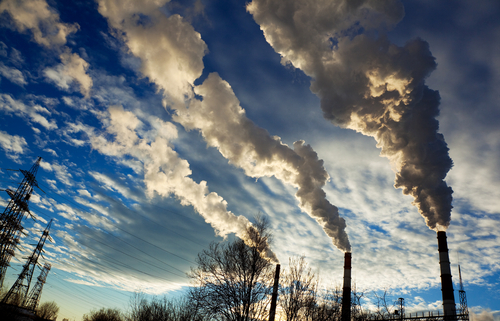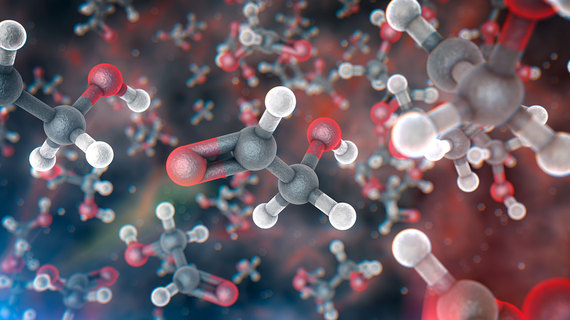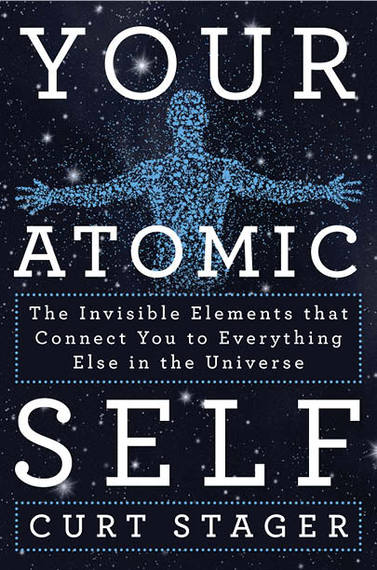How would you like to be made of air pollution? Believe it or not, much of your body actually is.
If you could imagine nine out of ten of your atoms suddenly losing their color, the remaining tenth would leave a ghostly translucent form of you behind, as though you were sculpted from smoked glass. That's what you would see if you could envision the eight hundred trillion trillion atoms of carbon that are now embedded in your body. Incredibly, about one in eight of those carbon atoms emerged recently from smokestacks and exhaust pipes.
By the end of this century, rising carbon dioxide emissions from the burning of coal, oil, and natural gas will lodge even more fossil carbon in the bodies of your descendants. This is because plants harvest carbon dioxide from the air, and when we dump fossil fuel carbon into the atmosphere much of it runs through the world's food chains and into our bodies. If we continue to burn fossil fuels at current rates until the remaining deposits run out, then people of the next century and beyond will be "children of the fumes," a species whose organic matter is largely derived from its own waste gases.
As I write these words, carbon dioxide comprises an average of 400 out of every million molecules in the air around me. When my ancestors first came to America from Germany during the eighteenth century, they breathed air that carried less carbon dioxide, closer to 280 molecules per million. The extra dose that we now inhale is traceable to the combustion of fossil fuels during the last two centuries. These amounts are minuscule compared with oxygen, which is thousands of times more abundant, but that puny fraction of oxidized carbon can melt vast ice caps, derange the chemical balance of the oceans, and also become an ever greater part of you.
When I called the atmospheric chemist Ralph Keeling at his laboratory in La Jolla to ask about the fraction of carbon in our bodies that comes from fossil fuels, he estimated that about half of the additional carbon in modern food chains -- or about one-eighth of the carbon in your body -- came from the carbon dioxide exhaust of fossil fuels, and the other half represents displaced refugees from the sea.
In simplest terms you build most of your body from air and water, but to do this you need the help of plants and light-harvesting microbes. Every protein fiber in your muscles, every fleck of body fat or speck of blood sugar, every gene, membrane, and bone in your body bears a framework of carbon atoms that were pulled from the same atmosphere that surrounds you now, in which carbon is as rare as gold dust in a gravelly stream bed. But that precious fraction, when sifted out and melded into plant sugars, can also be reworked into other living things, including you.
Carbon invades your lungs with every breath, but it only becomes an integral part of you when you eat or drink it. You, in that sense, are a body snatcher, a stealer of carbon from other living things. If you trace your atomic supply lines backward from fork to farm and fishnet, you will eventually meet plants, algae, and cyanobacteria. These are your portals to the airborne carbon reservoir -- the primary producers of the planet.
Although it is easy to say that "all life is connected" in some vague sense, most of the connections are hidden from casual view by size, time, and distance. Even if you grow or hunt your own food, it isn't normal to think of yourself and your surroundings in atomic terms. So here is an invitation to be abnormal for a moment. Consider, if you will, your inner carbon.
The carbon atoms in your hand are identical to those in soot, and some of them may actually become soot someday if your mortal remains are cremated. They are also identical to the carbon atoms in everyone you have ever met or heard of, as well as in every imaginable creature from worms to wombats, the plastic of your computer screen, the gasoline that powers your car, and the asphalt that you drive on. The carbon atoms in your eyelashes could just as well help to produce the distinctive pigments of your eyes, and in ages past they may also have been spun into the world's first spiderwebs, or brightened the colorful wings of ancestral birds, or sweetened the fragrances of prehistoric flowers.
The atoms in your body are not distracted by memories of earlier times spent in cave-bear breath or other previous incarnations, and the weaving of waste carbon into your flesh has no direct effect on your health or appearance. Human bodies have always been cobbled together from recycled pieces of people and other things that have used and discarded them over the ages. We are all, in that sense, the "living dead." But our recognition of such atomic connections can make it easier to remember what many of our ancestors knew in more intuitive ways: None of us lives in true isolation from the rest of the world.
Recognizing the presence of fossil fuel atoms in your body is a valuable exercise, not because they hurt you directly but because they affect climates, habitats, and people all over the world. In this realm of atoms, material things are not truly created or destroyed but are instead recycled and reconfigured. And when it comes to dealing with our wastes while we go about the business of living, it is good to remember that, at least here on Earth, there is no such place as "away" for us to throw them into forever.
From an atomic perspective you are a wondrously complex form of condensed air. It should be no surprise, then, that changing the composition of the atmosphere can alter the composition of your body, and in today's increasingly crowded, industrialized world we are doing just that. We are not only the cause of air pollution: To an ever-increasing extent, we are air pollution.
Excerpted from Your Atomic Self: The Invisible Elements That Connect You to Everything Else in the Universe, by Curt Stager. Copyright 2014 by the author and reprinted by permission of Thomas Dunne Books.



